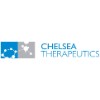
TD-9855 Phase 2 in Neurogenic Orthostatic Hypotension (nOH)
Neurogenic Orthostatic HypotensionMultiple System Atrophy (MSA) With Orthostatic Hypotension7 moreThis multiple-center, 3-part, single-blind dose escalation (Part A), randomized, double-blind (Part B), and open-label multiple dose extension (Part C) study will be conducted in male and female subjects with neurogenic orthostatic hypotension to evaluate the effect of TD-9855 in improving symptoms of orthostatic intolerance.

Clinical Study of Droxidopa in Patients With Neurogenic Orthostatic Hypotension (NOH)
Symptomatic Neurogenic Orthostatic Hypotension (NOH)Non-diabetic Neuropathy2 moreThe purpose of this study is to see whether droxidopa is effective in treating symptoms of neurogenic orthostatic hypotension in patients with Primary Autonomic Failure (Pure Autonomic Failure, Multiple System Atrophy, Parkinson's Disease), Non-diabetic neuropathy, or Beta Hydroxylase deficiency.

Treatment of Supine Hypertension in Autonomic Failure
HypertensionSupine hypertension is a common problem that affects at least 50% of patients with primary autonomic failure. Supine hypertension can be severe, and complicates the treatment of orthostatic hypotension. Drugs used for the treatment of orthostatic hypotension (eg, fludrocortisone and pressor agents), worsen supine hypertension. High blood pressure may also cause target organ damage in this group of patients. The pathophysiologic mechanisms causing supine hypertension in patients with autonomic failure have not been defined. In a study, we, the investigators at Vanderbilt University, examined 64 patients with AF, 29 with pure autonomic failure (PAF) and 35 with multiple system atrophy (MSA). 66% of patients had supine systolic (systolic blood pressure [SBP] > 150 mmHg) or diastolic (diastolic blood pressure [DBP] > 90 mmHg) hypertension (average blood pressure [BP]: 179 ± 5/89 ± 3 mmHg in 21 PAF and 175 ± 5/92 ± 3 mmHg in 21 MSA patients). Plasma norepinephrine (92 ± 15 pg/mL) and plasma renin activity (0.3 ± 0.05 ng/mL per hour) were very low in a subset of patients with AF and supine hypertension. (Shannon et al., 1997). Our group has showed that a residual sympathetic function contributes to supine hypertension in patients with severe autonomic failure and that this effect is more prominent in patients with MSA than in those with PAF (Shannon et al., 2000). MSA patients had a marked depressor response to low infusion rates of trimethaphan, a ganglionic blocker; the response in PAF patients was more variable. At 1 mg/min, trimethaphan decreased supine SBP by 67 +/- 8 and 12 +/- 6 mmHg in MSA and PAF patients, respectively (P < 0.0001). MSA patients with supine hypertension also had greater SBP response to oral yohimbine, a central alpha2 receptor blocker, than PAF patients. Plasma norepinephrine decreased in both groups, but heart rate did not change in either group. This result suggests that residual sympathetic activity drives supine hypertension in MSA; in contrast, supine hypertension in PAF. It is hoped that from this study will emerge a complete picture of the supine hypertension of autonomic failure. Understanding the mechanism of this paradoxical hypertension in the setting of profound loss of sympathetic function will improve our approach to the treatment of hypertension in autonomic failure, and it could also contribute to our understanding of hypertension in general.

Clinical Effect of Ampreloxetine (TD-9855) for Treating Symptomatic nOH in Subjects With Primary...
Symptomatic Neurogenic Orthostatic HypotensionA Phase 3 study to evaluate efficacy, safety, and tolerability of ampreloxetine (TD-9855) in subjects with primary autonomic failures (MSA, PD, or PAF) and symptomatic nOH with up to 4 weeks of treatment.

Norepinephrine Transporter Blockade, Autonomic Failure (NETAF)
Neurogenic Orthostatic HypotensionDrug therapy for patients suffering from autonomic failure and neurogenic orthostatic hypotension are scarce and not effective. If left untreated, these patients have the highest risk of syncope, falls and fall-related injuries. The proposed study will determine the clinical benefit of a commercially available drug, atomoxetine, to reduce symptoms associated with neurogenic orthostatic hypotension in patients with autonomic failure.

Abdominal Compression in Orthostatic Hypotension
Autonomic FailureOrthostatic HypotensionThe purpose of this study is to assess if abdominal binders that use pull strings to adjust compression (non-elastic) are more effective than standard elastic abdominal binders in attenuating neurogenic orthostatic hypotension.

Deep Brain Stimulation for Autonomic and Gait Symptoms in Multiple System Atrophy
Multiple System AtrophyAutonomic Failure5 morePatients referred to neurosurgery routinely and safely undergo deep brain stimulation (DBS) for treatment of symptoms related to neurodegenerative conditions, most commonly Parkinson's disease. In the investigators experience, and published evidence shows, that stimulation has effects on the autonomic nervous system. In patients undergoing therapeutic DBS for a particular subtype of Parkinsonism, Multiple System Atrophy, the further effects on autonomic parameters such as blood pressure and bladder symptoms as well as the originally intended indications (gait and movement disorder) will be investigated. The mechanisms of any effects will also be studied by using a number of techniques such as magnetoencephalography (MEG) and Muscle Sympathetic Nerve Activity (MSNA) recording. Key goals are to: Demonstrate that stimulation of the peduculopontine nucleus (PPN) improves autonomic function and has an attendant improvement on patients' quality of life Investigate the role of the PPN and how it interacts with other brain areas. This translational strategy will lead to a larger efficacy study of DBS for MSA as well as revolutionizing neural-based treatments in other autonomic disorders such as orthostatic hypotension and pure autonomic failure.

Clinical Study of Droxidopa in Patients With Neurogenic Orthostatic Hypotension (NOH) (Droxi-304)...
Primary Autonomic FailureDopamine Beta Hydroxylase Deficiency2 moreSymptomatic NOH in patients with primary autonomic failure is thought to be a consequence of norepinephrine depletion leading to a diminished capacity to effect an appropriate cardiovascular response to an orthostatic challenge resulting in symptomatic cerebral-hypoperfusion. Droxidopa augments norepinephrine levels which should lead to improved cerebral perfusion following orthostatic challenge thereby reducing the symptoms of NOH. The present study will evaluate the long-term safety of droxidopa.

Water and Sudafed in Autonomic Failure
Shy-Drager SyndromeMultiple System AtrophyThe specific aim of this study is to determine whether water ingestion potentiates the pressor response to pseudoephedrine in patients with primary disorders of autonomic failure. The study design will enable us to also evaluate the pressor response to water alone and to pseudoephedrine alone. In a secondary analysis, we will compare the results in patients with two autonomic disorders, pure autonomic failure (PAF) and multiple system atrophy (MSA). We hypothesize that drinking water following a dose of pseudoephedrine will lead to a greater increase in blood pressure than pseudoephedrine alone.

Contribution of Angiotensin II to Supine Hypertension in Autonomic Failure
HypertensionPure Autonomic Failure1 moreThe purpose of this study is to test the hypothesis that angiotensin II plays a role in the supine hypertension of primary autonomic failure. To determine the contribution of angiotensin II to renin and blood pressure regulation in autonomic failure, patients with multiple system atrophy [MSA] or pure autonomic failure [PAF] and supine hypertension will undergo medication testing with the angiotensin II receptor blocker losartan. The investigators will compare the biochemical and hemodynamic effects between MSA and PAF patients. In a subset of patients, the investigators will also give the ACE inhibitor captopril. Our primary endpoint will be changes in plasma renin activity, and subsequent components of the circulating renin-angiotensin system, in response to angiotensin II blockade. Our secondary outcome will be changes in hemodynamic measures during administration of these drugs.
